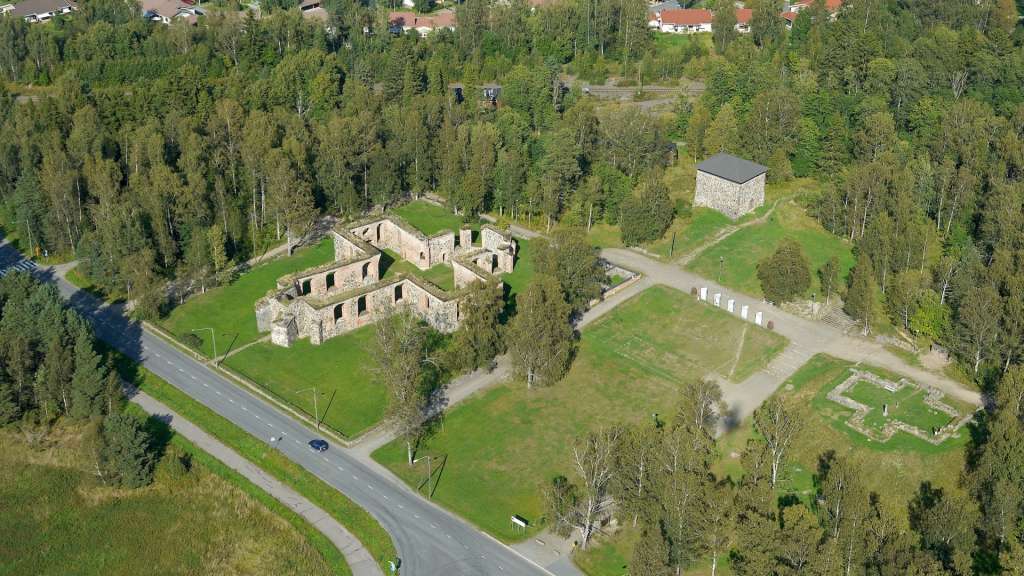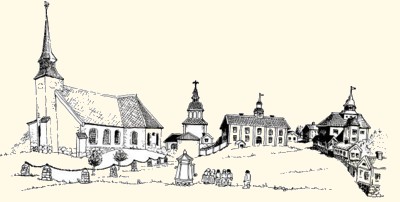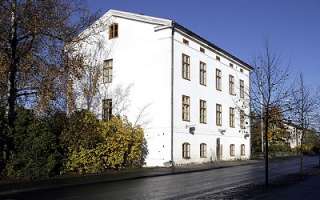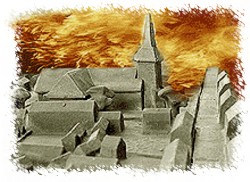
The History of Old Vaasa
The history of Vaasa can be traced to the early 14th century when sailors from Norrland landed on a forested island at the site of Old Vaasa.
In the 1370’s Korsholm Castle was already being built on the spot. After the last ice age the land has been continuously rising in these parts of Finland. At the time Korsholm Castle was built, the area between Old Vaasa and the present town was under water and the coastline was further inland compared to the current one. Even as late as about 200 years ago ships sailed to Vaasa along the channel that now, almost filled in, meanders across fields.

The first well-known Swedish magnate of Korsholm Castle was Bo Johnsson Grip. His fiefs consisted of the whole of Northern Finland and part of northern Sweden. In 1606 the King of Sweden, Carl IX founded the town of Vaasa around the oldest harbour and trading point in Ostrobothnia. The town was named after the Royal House of Wasa, and the House’s coat of arms was made its symbol. In the 17th century trade was thriving and many if the burghers of Vaasa managed to make considerable fortunes.
During the Great Northern War 1700-1721 the town was destroyed and the merchant ships of the burghers were burnt. The years of crop loss completed the destruction. Most of the inhabitants fled over the sea to Sweden. In 1765 Vaasa received staple right and trade began to flourish again. Exported good such as tar, pitch, grain, butter, hides and timber created Vaasa’s new wealth. In the mid 1800’s Carl Gustav Wolff built a merchant fleet in the North at the time. At midsummer in 1808 the town was destroyed once again. The country was at war with Russia. The Russians defeated the Swedish rein-forcements and took over the province. 400 men lost their lives in the battles. The enemy troops ransacked the town for three, causing the deaths of many inhabitants. In the early 19th century, the houses in the small town of Vaasa did not differ much from those of the peasants’ in the countryside. There were a few two-storey buildings but only on the main street called Kauppiaankatu. During the dark seasons the town’s bumpy streets were lit with lanterns that were placed on the street corners.
In 1776 the Court Of Appeal was founded in Vaasa by Gustav III.
This was the second Court Of Appeal in Finland. The building, designed by Superintendent C . F. Adelcranz, was completed in 1786. Around that time, in 1776, the town received a printing office. In the 1840’s the first fast-speed press in the entire country started operating in Vaasa. After almost everything in Vaasa had burned to the ground in 1852 the court building was turned into a church, now known as Korsholm Church. With the establishment of the Court Of Appeal the town gained importance and the social life brightened up. In 1794 the first reading library in Finland was set up in Vaasa. Theatre performances and concerts were also held. Vaasa had its own public bath, various meeting houses and taverns. A provincial hospital (nowadays Old Vaasa hospital) was founded as early as 1768, and in 1844 it was expanded to fit 120 beds. The main building of the hospital was the work of architect C.L. Engel.
The prosperous businessman Abraham Falander (1746-1815) was the owner of a tobacco factory, a shipyard and a merchant house.

He was one of the first large scale exporters of timber. In 1798 he founded the Östermyra iron works in Seinäjoki. Gustav IV Adolf ennobled him and he was given the name of Wasastjerna. The Wasastjerna house, built in 1782, is nowadays a local history museum,The Museum of Old Vaasa (The Ostrobothnian Museum), where one can see, for instance, an old-fashioned office of a ship owner from the 1850’s. It was in this building that the senior secondary school, the savings bank and the exchange office of the Bank of Finland started operating.
 On a hot August morning in 1852 a disastrous fire broke out in Vaasa.
On a hot August morning in 1852 a disastrous fire broke out in Vaasa.
A careless pedlar had fallen asleep in magistrate Aurén’s shed and dropped his pipe on the hay. The wells were empty and most of the inhabitants were out working in the fields. The houses had either thatch or bark roofs and buildings were separated only by narrow gaps. By nightfall the flourishing town had turned into smoking ruins. Only the few buildings such as the Court of Appeal survived the fire as well as the stone walls and vaults of the Wasastjerna House, the hospital and the vicarage. In 1793 there were 2,178 inhabitants in Vaasa. In the year of the fire, 1852, the number had grown to 3,200.
Vaasa was rebuilt some seven kilometers away from the old place. The relocation provided better prospects for trade and a better harbour as well as a safer and more modern town plan. The legal town status of Vaasa was moved to new Vaasa in 1862.
The ruin area
Already before the year 1300 a wooden church was built on Kappelinmäki and later a new one closer to the old town centre. St. Mary’s stone church was built between the 1480’s and 1550’s. Enlargements were made after the visit of Per Brahe in 1649. During the Great Northern War most of the valuables in the church, such as the church bells and chandeliers, were stolen. In the 1700s St. Mary’s was rebuilt into a large cruciform church to fill the needs of the entire province. After the war of 1808-1809 the church was redecorated in white and gold. An altarpiece made by Johan Gustav Sandberg, which can nowadays be seen in Mustasaari church, was acquired for St. Mary’s in the 1840’s. The altar screen and the pulpit from the 1600,s were moved in the 1840’s to Replot church where they avoided the great fire that later on destroyed most of the town, including St. Mary’s Church. In 1776 the Court Of Appeal was founded in Vaasa by Gustav III. This was the second Court Of Appeal in Finland. The building, designed by Superintendent C . F. Adelcranz, was completed in 1786. Around that time, in 1776, the town received a printing office. In the 1840’s the first fast-speed press in the entire country started operating in Vaasa. After almost everything in Vaasa had burned to the ground in 1852 the court building was turned into a church, now known as Korsholm Church. The bell tower, designed by C.A. Setterberg, was built in the 1870’s.
A children’s school was founded in Vaasa in 1641. Also, a junior secondary school was relocated from Nykarleby to Vaasa in 1683. The foundations of the school building were laid in 1691 and can still be seen. Finland’s national poet Johan Ludvig Runeberg was one of the well-known pupils of the school. Early 19th century’s Vaasa also had a Bell-Lancaster school for the underprivileged, a business school, a navigation school and a craftsman’s school. A senior secondary school was founded in 1841 to which the famous provincial song by Zacharias Topelius, the Vaasa March, was dedicated.
